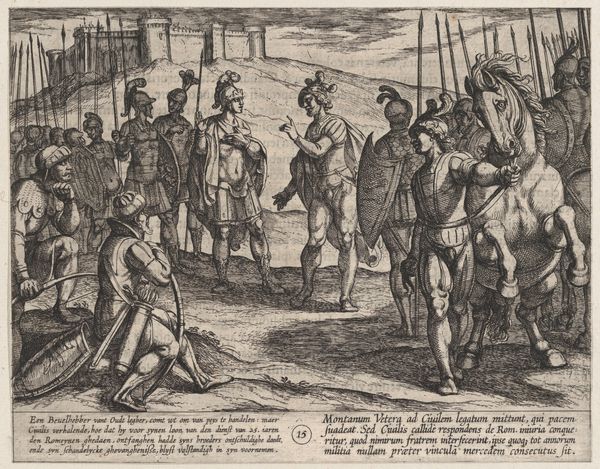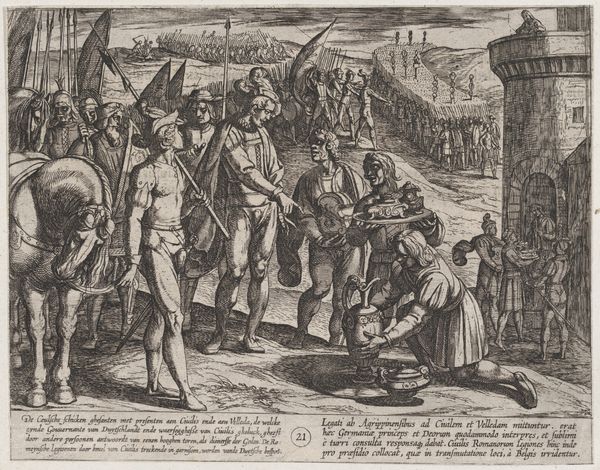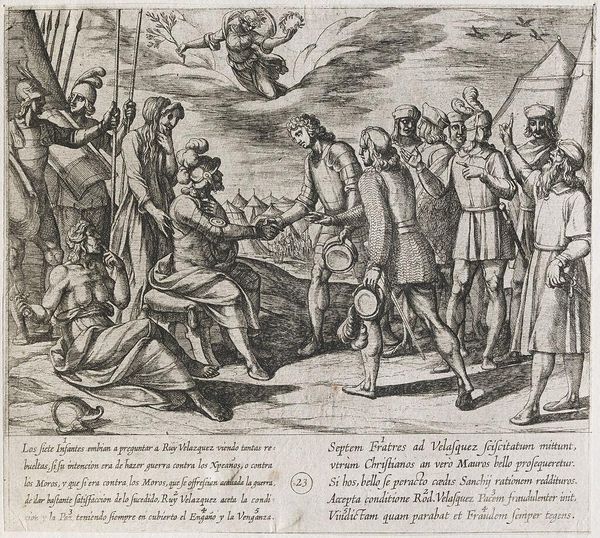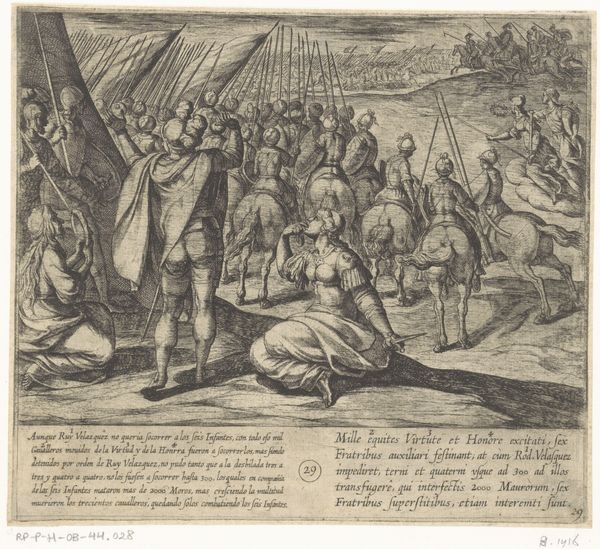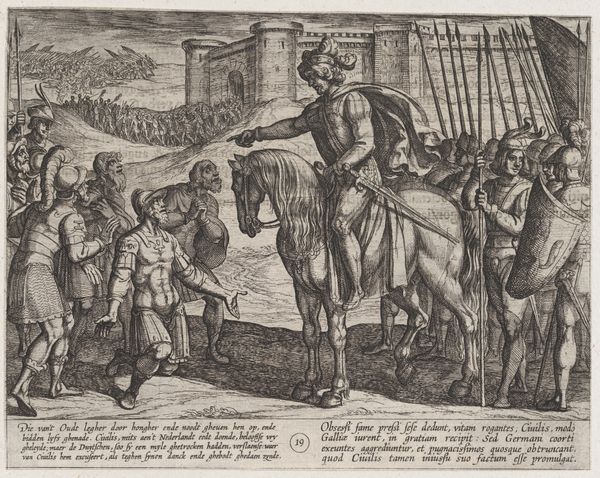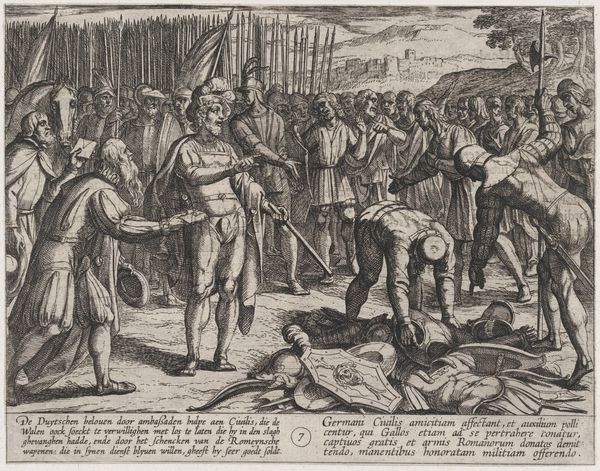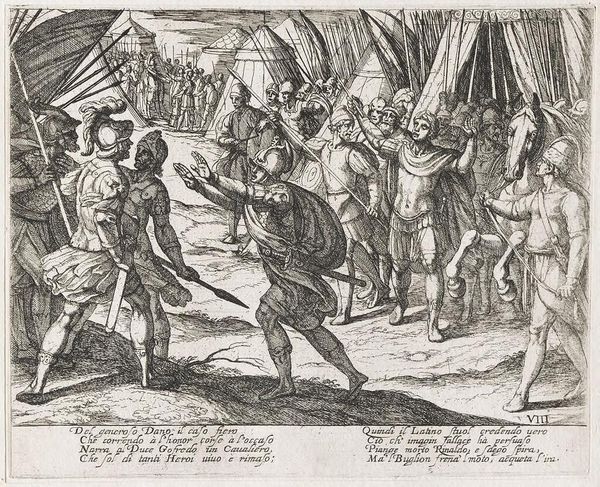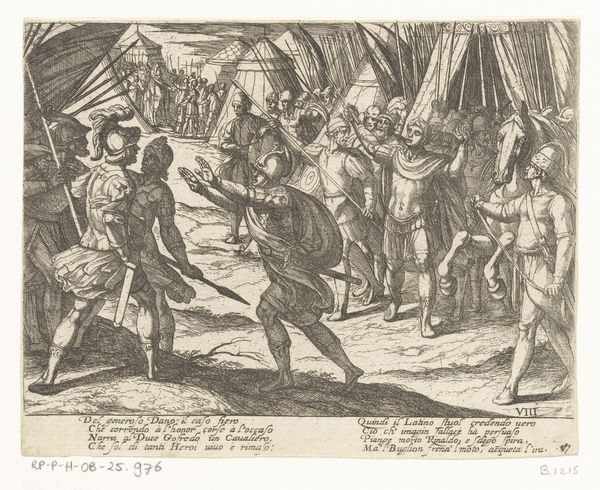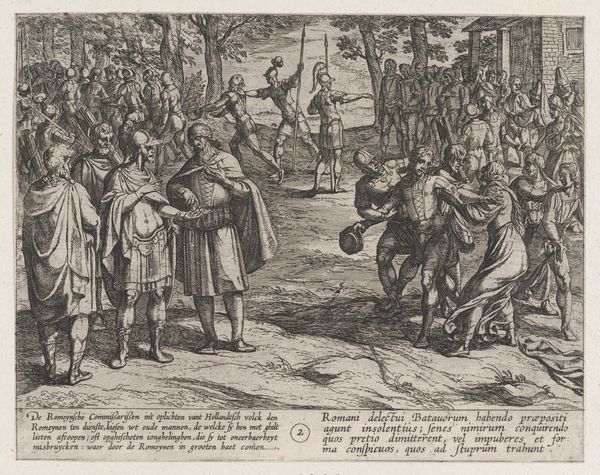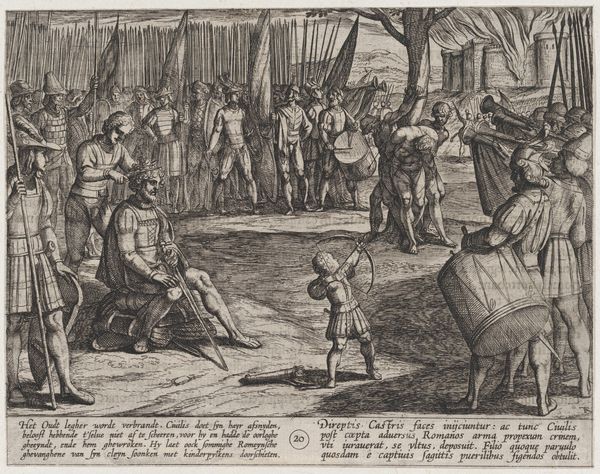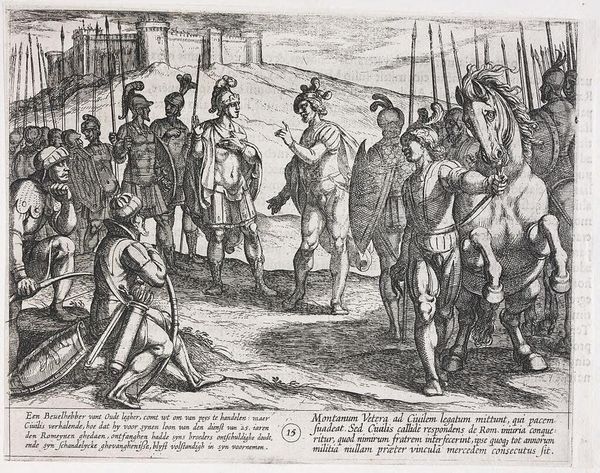
De zonen van Lara bieden hun hulp aan aan Ruy Velazquez en hij sluit valselijk vrede met ze 1612
0:00
0:00
antoniotempesta
Rijksmuseum
engraving
#
narrative-art
#
baroque
#
pen illustration
#
old engraving style
#
figuration
#
history-painting
#
engraving
Dimensions: height 185 mm, width 206 mm
Copyright: Rijks Museum: Open Domain
Curator: So, here we have a fascinating print by Antonio Tempesta, dating back to 1612. It's titled "De zonen van Lara bieden hun hulp aan aan Ruy Velazquez en hij sluit valselijk vrede met ze," which translates to "The sons of Lara offer their help to Ruy Velazquez and he falsely makes peace with them." Editor: It’s intense, almost claustrophobic. Look at the density of the figures, all those stark lines… it feels like a political powder keg about to explode. The expressions are really grabbing me. Curator: Tempesta worked primarily with engravings, so it's all about line, creating tone and volume through hatching and cross-hatching. You see how he uses that to portray everything, the textures of the armor, the folds of the clothing. It depicts a historical event—a deception, a false peace, judging from that title—laden with intrigue. Editor: Oh, deception for sure! The angel-like figure floating above… almost feels ironic, holding out the olive branch and laurel wreath like that! Then you have the guy sitting down with that thousand-yard stare… plus, it is super interesting with the characters with beer steins hanging off their sides - in peace talks! Or perhaps a symbol of feigned brotherhood with veiled intent, that idea of everyone raising a glass together. Curator: Right! These prints circulated widely; they were the news media of the day. Tempesta's detailed work really helped to solidify narratives, reinforce certain moral messages, and propagate viewpoints about events, about people, even, through readily available visual culture. It's about storytelling, yes, but also, power. Editor: I can really feel that here. A kind of psychological battle, rendered on a very accessible scale, meant for mass consumption! The engraving becomes this permanent symbol of mistrust. The real staying power resides in these universal truths and unspoken expectations of deceit within agreements or unspoken bargains that make a work relevant centuries later. Curator: Agreed. It's a really stark visual document of political maneuverings. The detail almost amplifies the moral complexity of the narrative, right? You almost have to squint and read to take it all in. Editor: Indeed. It makes me question when what we’re seeing and when a ‘peace’ or gesture or symbol of goodwill should be closely inspected and taken with a healthy skepticism. Perhaps a really valuable historical piece from centuries past about not trusting appearances and intentions that easily.
Comments
No comments
Be the first to comment and join the conversation on the ultimate creative platform.
